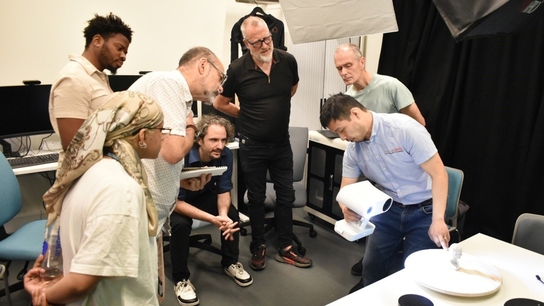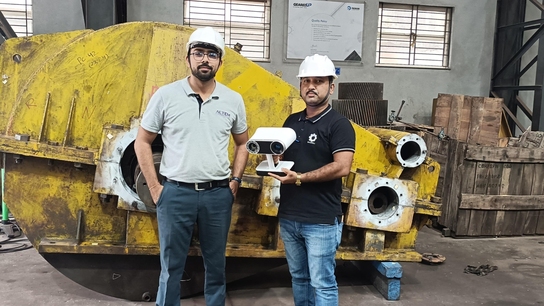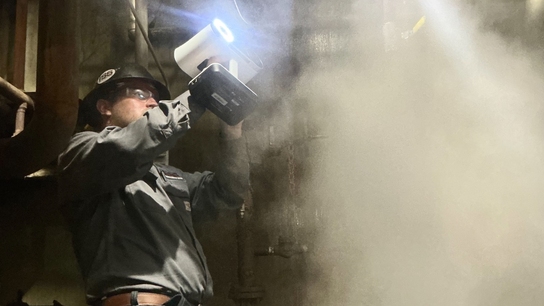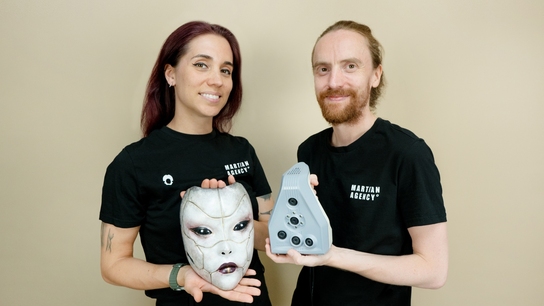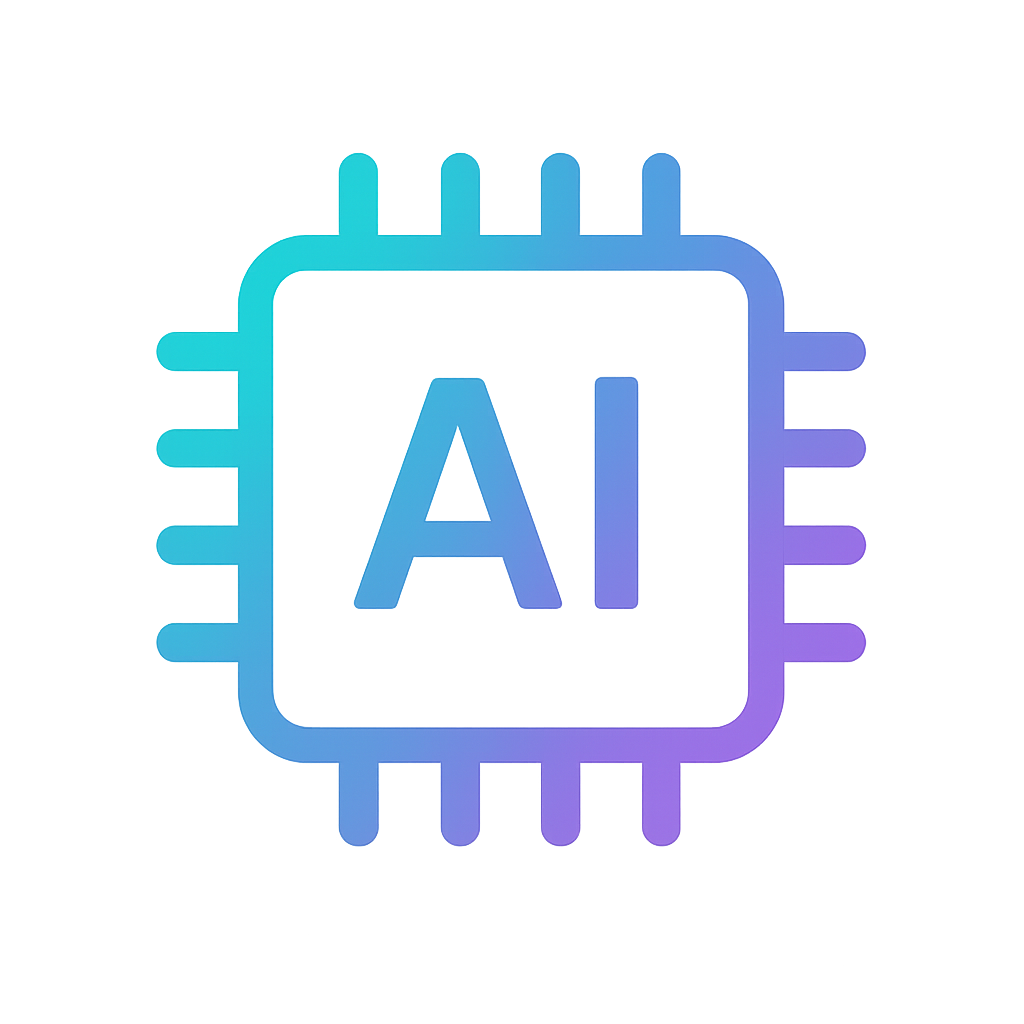Saucony brings back the classic Matrix sneaker design with Artec Spider II
Challenge: Relaunching a classic product without any CAD data, while remaining faithful to the design principles that made the original so popular with customers around the world.
Solution: Artec Spider II, Artec Studio
Result: A high-resolution 3D model that captures the essence of the original shoe, right down to the finest of details, making it the perfect basis for a sequel. Spider II’s success has spawned a string of follow-up projects, unlocking opportunities in both product design and marketing.
Why Artec 3D?: Spider II’s real-time feedback and lightweight, ergonomic design make it incredibly intuitive to use – even for complete newcomers. Compared to manual modeling, 3D scanning is also much faster, in a way that shortens time to market for new products.
Saucony’s classic sneaker, styled creatively in a ‘Matrix’ pattern. Image courtesy of Saucony
Nostalgia is a powerful feeling – and fashion brands are increasingly bringing back classic looks, whether it be Adidas’ Samba sneaker or Nike’s Total 90 football range.
In seeking to relaunch one of its own groundbreaking designs, Saucony has taken this trend to the next level. First introduced in 1999, the Matrix was a game-changing shoe that straddled the line between sports and fashion wear like no other. It also captured the Y2K era perfectly (just like its namesake movie), bringing the old and new worlds crashing together.
The only question was how to bring it back. A rare, delicate old prototype had been salvaged from nearly three decades ago, but it couldn’t exactly be probed or pulled apart. As a long-time Artec Eva & Artec Space Spider user, Saucony identified high-speed, contact-free 3D scanning as the ideal technology for the job, but they needed a device that’d really go the extra mile.
That’s why Artec Ambassador Digitize Designs set them up with Artec Spider II, a faster, higher-resolution device with a broader field of view, making it even more intuitive to use. With the support of their reseller, Saucony’s team are now able to create beautifully realistic 3D models with all the tiny features needed to faithfully recreate and iterate upon original designs.
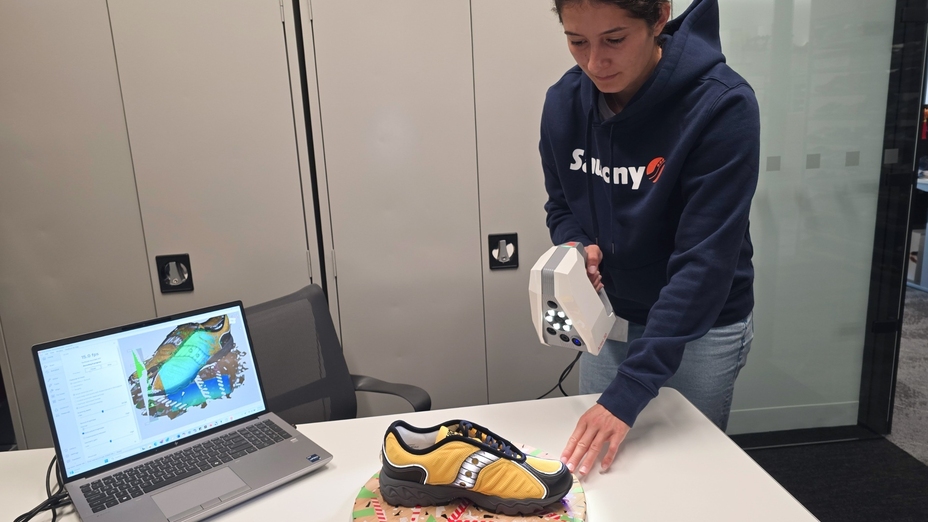
Artec Spider II being used to scan an old Matrix prototype. Image courtesy of Saucony
Recapturing the spirit of the Matrix
Saucony’s team wanted to recreate the design as faithfully as possible. Before, in cases where they didn’t have CAD data, they’d work off samples. But reverse engineering with such fragile materials is inherently risky. Seeking a sub-millimeter-accurate, high-resolution scanner, Spider II seemed like the obvious choice, and adopting the device turned out to be seamless.
Like most other Artec 3D scanners, Spider II doesn’t require targets. As such, its designers don’t need to set aside dedicated areas, they can simply set up their Artec Turntable and digitize on demand. In tandem with the Artec Studio 3D scanning software, Spider II also provides users with real-time feedback, which makes the device incredibly easy to use, while ensuring that complete datasets are captured – for reverse engineering, design, or anything else.
Compared to its Space Spider predecessor, Spider II features a wider field of view, scans in even higher resolution (up to 0.05 mm), and acquires more detailed 3D data. All this makes the device better suited to capturing classic designs like the Matrix shoe, not just dimensionally, but in full color, with all the intricate patterns that made the original such a break from the norm.
“If there’s an old silhouette everyone’s forgotten about and we want to reproduce it, we need to start with accurate information – we’re getting down to half a millimeter at least,” said Isaac Neaves, a lifestyle designer at Saucony. “We have to make sure that every one of those little captured details works out. That’s the value proposition of Artec Spider II versus another scanner, where the resolution isn’t rich enough for what we’re looking for.”
Tidying up scans for sneaker modeling
Saucony’s team do all their data capture and tidy-up in Artec Studio, so there’s no need for third-party software. After scanning the Matrix prototype, Neaves used the platform’s built-in tools to overlay, register, and erase outliers from three scans – captured from above, the side, and below. Following high-resolution fusion, meshes were textured and simplified for export.
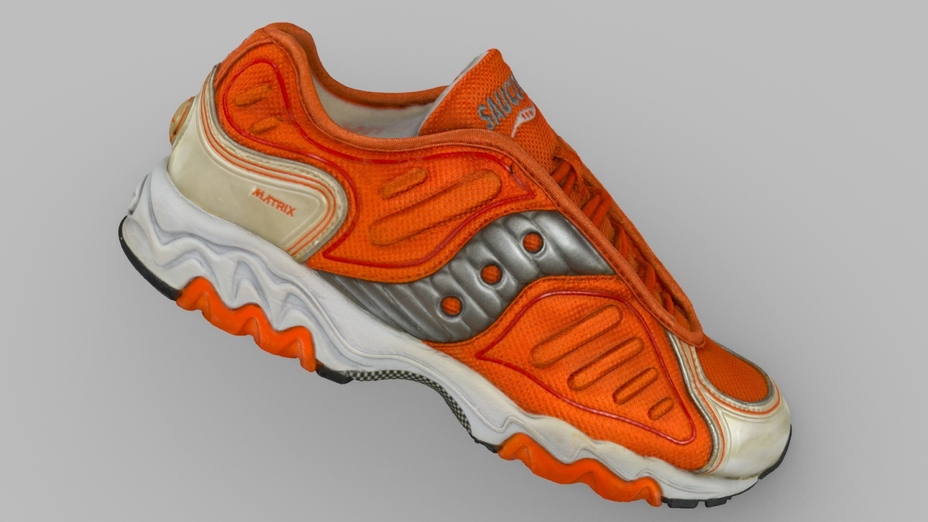
A high-resolution Matrix model, made using Spider II. Image courtesy of Saucony
According to Neaves, explaining these steps “almost feels silly because the software makes it so easy. “That’s kind of the beauty of it,” he adds. “Even if you’re just scanning a bring-back once a season, it’s so easy to just jump back in, I never feel like I’ve forgotten how to use it.”
Once they’d polished their Matrix model, Saucony sent a high-resolution file to a manufacturing partner, who used it as a basis for relaunching the classic shoe. Although it may have been possible to achieve this with the company’s last remaining sample, it would’ve involved a lot of back and forth, and results had to be right first-time. Ultimately, this turned out to be the case – there was no drop-off in quality – and their workflow was much faster.
“We used to have these scrambles, looking for old bring-back files, and most of the time we’d come up short,” added Neaves. “Now, we can scan in under 15 minutes and send models out the same day. The next day, our development team is saying, ‘yeah, we can work with this,’ and within 3-4 days, we can get a one-to-one sample – this has become critical to hitting our deadlines, which are very tight windows, way faster than before.”
High-res models, more than just design tools
While Saucony does much of its 3D scanning for in-house bring-backs, it also uses the technology to bring collaborative projects to life. In one recent case, they were asked to create an eye-catching display for a collaborator’s pop-up event. Their response? Scanning and scaling a sneaker into an absolutely massive replica made up of 26 separate 3D-printed pieces.
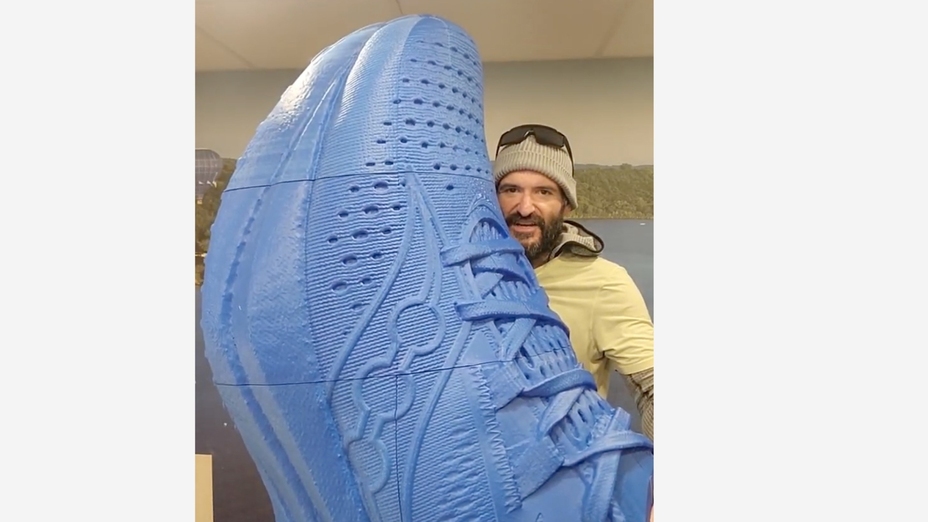
Saucony’s Luca Ciccone with a giant 3D-printed sneaker replica. Image courtesy of Saucony
At another event, Saucony created something even zanier: remote-control racing shoes. Once again, scanning was critical to the project. The original footwear was modified based on Artec 3D scans so that it’d fit around a remote-control car chassis. This kind of spectacle may sound bizarre, but it symbolizes how Saucony is exploring the boundaries of 3D technology.
“That was a really cool one. Our collab partner’s shoes were centered around the story of the tortoise and the hare,” explained Neaves. “They asked, ‘if we make a slot car track at our booth, could you change the cars to look like shoes?’ We just scanned the product, modified our 3D file, and put the shoes on – the next thing you know, they were racing!”
Already, the company’s designers have begun working with other types of footwear, as well as industry influencers, using 3D scanning to bring their creative visions to life. Whether it be designing futuristic fashion wear or bringing back a blast from the past, Saucony clearly isn’t satisfied with following trends – it aims to set them – one step at a time.
Scanners behind the story
Try out the world's leading handheld 3D scanners.

